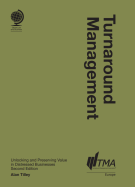New European proposals for minimum qualifications for insolvency practice
13 October 2017

Author bio coming soon

Author bio coming soon
In our latest blog, Paul Omar, member of the European Commission Experts Group on Restructuring and Insolvency and David Burdette, Senior Technical Research Officer at INSOL, discuss the new European proposals in the wake of the 2014 Recommendation aimed at introducing Europe-wide preventive restructuring frameworks.
The publication on 22 November 2016 of proposals aimed at introducing Europe-wide preventive restructuring frameworks has brought focus on the problems facing enterprises at a stage prior to formal insolvency when non-performing loans constitute a major threat to their success. Though affecting enterprises of all sizes, a particular concern is paid in the text to the situation of small- and medium-enterprises, which constitute the lifeblood of European commerce. In the wake of the 2014 Recommendation, which this text is designed to boost, attention will undoubtedly now be paid to how the various member states respond to the call for the institution of new frameworks or the overhaul of existing legislation so as to improve the chances of businesses in financial difficulties.
Interest in the text, however, should go beyond the preventive restructuring and second chance measures it promotes. Included in Title IV of the Draft Directive are proposals aimed at addressing perceived lacunae in support structures for restructuring (as well as other insolvency procedures!) across the European Union, chiefly associated with the qualification and training of insolvency professionals and the support for restructuring measures through the courts. That this should be addressed within the framework of this text may not come as a surprise given the express inclusion of practice connected rules in the call for expertise in September 2015 mentioning the subjects of interest for the Experts’ Group. The group first met in January 2016 and has been working on elements of the text on the basis of submissions by members of the group and other interested parties.
The proposals justify the extension of scope to include insolvency practice by making reference to the need to address issues with a “direct impact” on the duration of procedures, the specialisation of the judiciary and the professionalism of practitioners being the two specifically mentioned in the Explanatory Memorandum accompanying the Draft Directive. In this respect, specialisation of both courts and practitioners as well as reinforcement of the judiciary are seen as helping to speed up procedures and reduce their overall length and cost. According to Preamble Recital 39, this will lead to procedures of better quality with more effective supervision, a consequent improvement of the residual value for creditors and, importantly, a reduction in the legal uncertainty creditors face which are said to lead to low recovery rates at present.
Title IV, which is meant to address this overall concern, is relatively short, with only 5 draft articles, the last one of which (Article 28) addresses the incidental use of electronic communication at various stages of proceedings. At first sight, the proposals do not contain much that should alarm the world of insolvency practice. Thus, the proposals state that judicial and administrative authorities should receive training (both “initial and further”, addressing foundational skills as well as continuing professional development needs) to a level appropriate for the responsibilities they are to undertake (Article 24(1)).
With the caveat that preventive procedures need not involve judicial or administrative authorities, excepting insofar as there is a need to safeguard the interests of stakeholders through supervision or to intervene punctually for the purposes of expediting matters (Preamble Recital 18), the proposals suggest that the focus of the training should be, for the courts at least, to ensure that the appropriate expertise and specialisation is available in order to allow for efficient and expeditious treatment of cases (Article 24(2)). This is acknowledged as being especially important given the “potentially significant economic and social impacts” cases may have (Preamble Recital 39).
So far, the approach seems uncontentious, particularly as the proposals recognise the differences in court structures across the European Union and seek to avoid prejudicing the member states’ competence in matters of judicial organisation and the independence of judges themselves. Thus, member states are not required to ensure that judges have an exclusive competency in restructuring and insolvency matters, but may create specialised courts or divisions (chambers) provided their national systems so allow.
Turning to the status of practitioners, the same concern for retaining as much informality in the preventive process is evident, as the proposals do not envisage appointments as mandatory, but subject to a case by case appreciation of the debtor’s needs and specific circumstances of the case, including, for example, where effective supervision is needed to safeguard stakeholder interests (Preamble Recital 18). The proposals stipulate the same “initial and further” training requirements as for judges, suggesting that this will lead to an “effective, impartial, independent and competent” provision of services (Article 25(1)).
The provisions further go on to suggest that member states encourage the development of voluntary codes of conduct for practice as well as effective oversight mechanisms, which, with appropriate regulatory structures including a sanctions element, should lead to effective supervision of the practitioner (Articles 25(2), 27(1)). What the voluntary codes should contain might include, the proposals suggest, guidance as to appropriate levels of qualification and training, rules on the transparency of the duties to which practitioners are subject, how their remuneration is determined and requirements for professional indemnity cover (Preamble Recital 40).
Overall, however, these requirements are not intended to impose any particular obligation to create a new qualification or profession to accommodate the changes that may be required. What this reflects is the fact that, across the European Union, there is considerable diversity at present in the way the profession is organised and regulated. As with the concerns about member state competence and judicial independence, the unwillingness to be more prescriptive can be seen to underline these proposals, which are firmly intended to avoid harmonisation.
Where the text has delved a little deeper on issues of practice organisation, however, is in connection with appointments and remuneration. Here, the proposals require that the process by which practitioners are appointed or removed or resign is “clear, predictable and fair” (Article 26(1)). What this means in practice is that the conditions for eligibility and grounds for ineligibility for appointment are “clear and transparent” (Article 26(2)). Furthermore, where responsibility for appointments falls to the courts or administrative authorities, the criteria should similarly be “clear and transparent”, although the selection may be influenced by the experience or expertise of the practitioner under consideration and room may be given for appropriate consultation of the debtor and/or creditors in the making of that choice (Article 26(3)).
Dealing with the specific situation of cross-border instances, other criteria for selection could include the human and administrative resources available to the practitioner and, perhaps more importantly, their ability to communicate and cooperate with foreign practitioners and courts (Article 26(4)). Insofar as remuneration receives a mention in the proposals, the text suggests that the rules in member states by which fees and expenses are determined should serve as an incentive for the “timely and efficient resolution” of procedures, subject to consideration of the overall complexity of proceedings and the availability of mechanisms for the timely resolution of any disputes over remuneration (Article 27(2)).
While much in the proposals is uncontentious, questions might be asked as to whether the time is right to lay down even these modest rules. Politically, the downplaying of the proposals connected to practice, which may be conceived of as ancillary to the main objective of the Draft Directive to promote preventive restructuring, suggests the answer to this is in the affirmative. In the way the proposals are drafted with very flexible and open language, the intention is clearly to make this first step towards establishing minimum requirements for oversight and regulation more palatable for the member states.
In the long run, however, it should be noted that, in a 2014 Report surveying the state of insolvency office-holder regulation across its client states, including a number of the members of the European Union, the EBRD considered the way in which practice is organised to have an impact on the success of insolvency procedures, with jurisdictions where professional organisations were independent and active and where less tutelage by state bodies existed being perceived as more successful at inspiring public confidence in the good administration of procedures. This would very much advocate for a more profound reflection on this issue when the dust has settled on this particular text. There may be then, in light of the way in which the text will have been implemented, a better idea of any consensus towards further development of practice rules and frameworks in Europe at least.













Any comments - send us an email